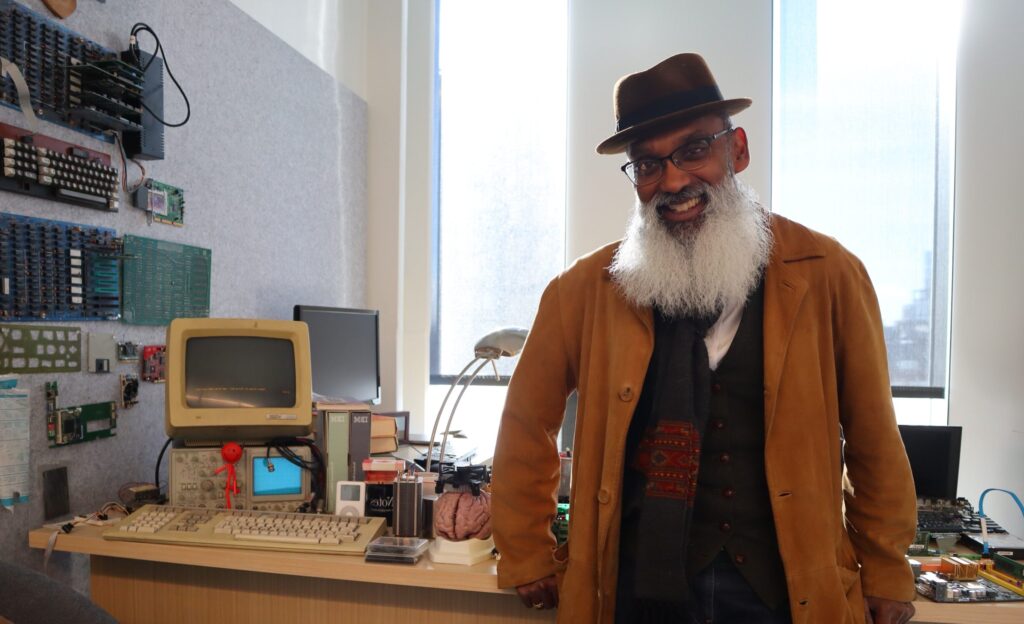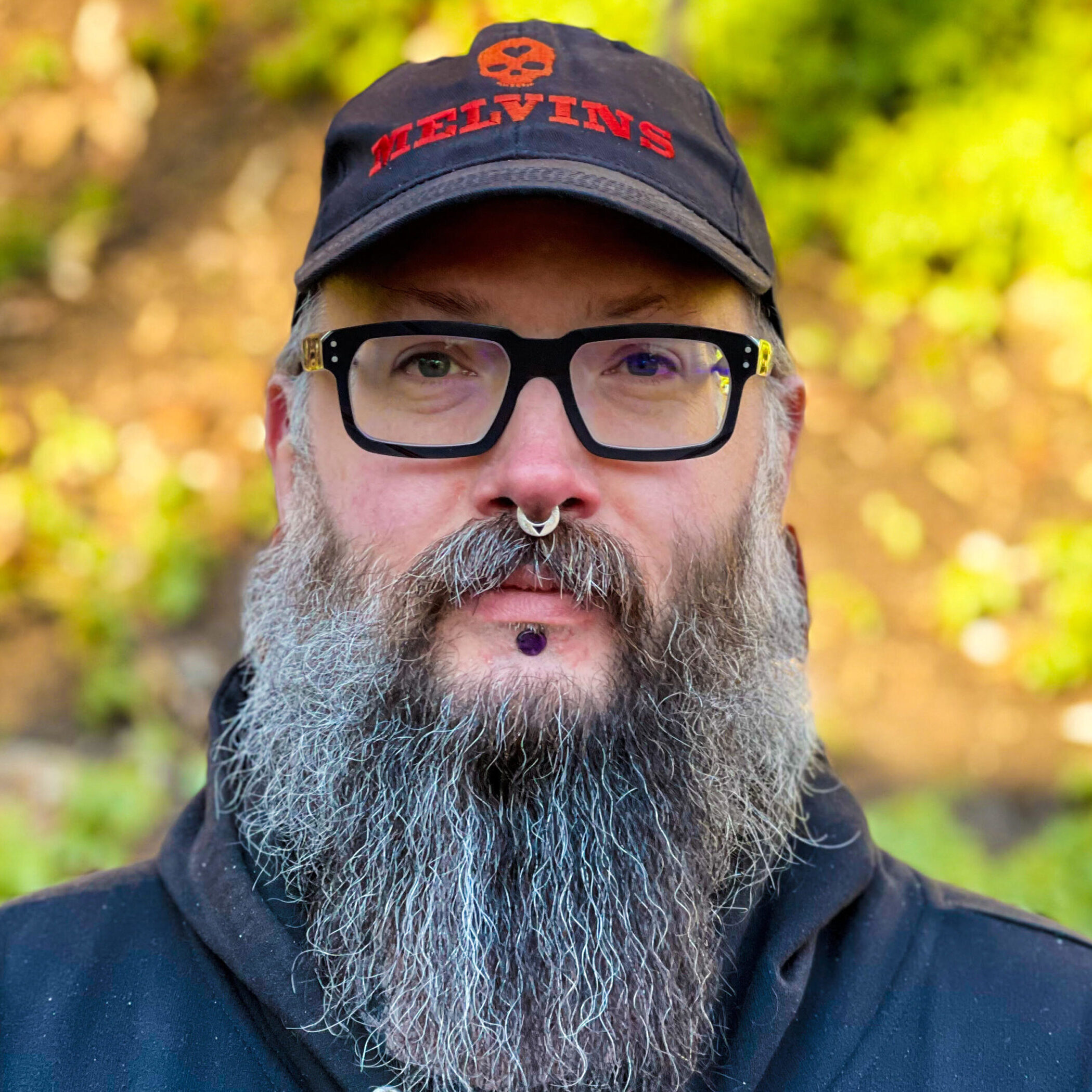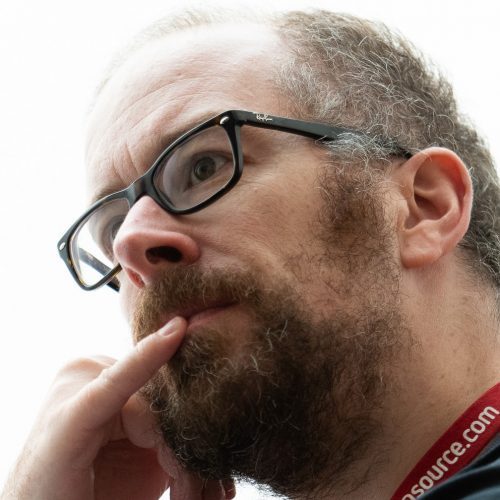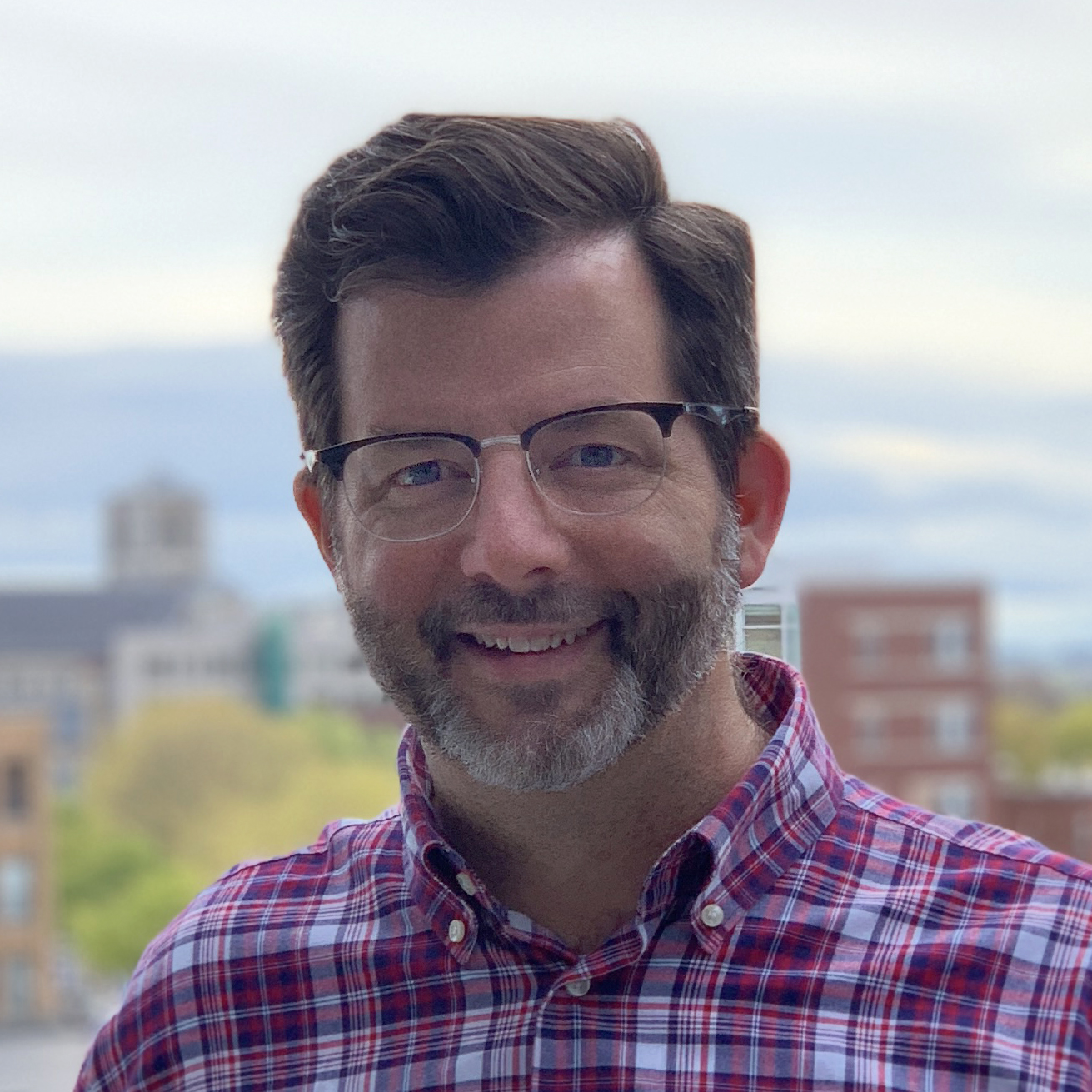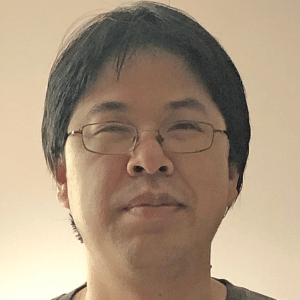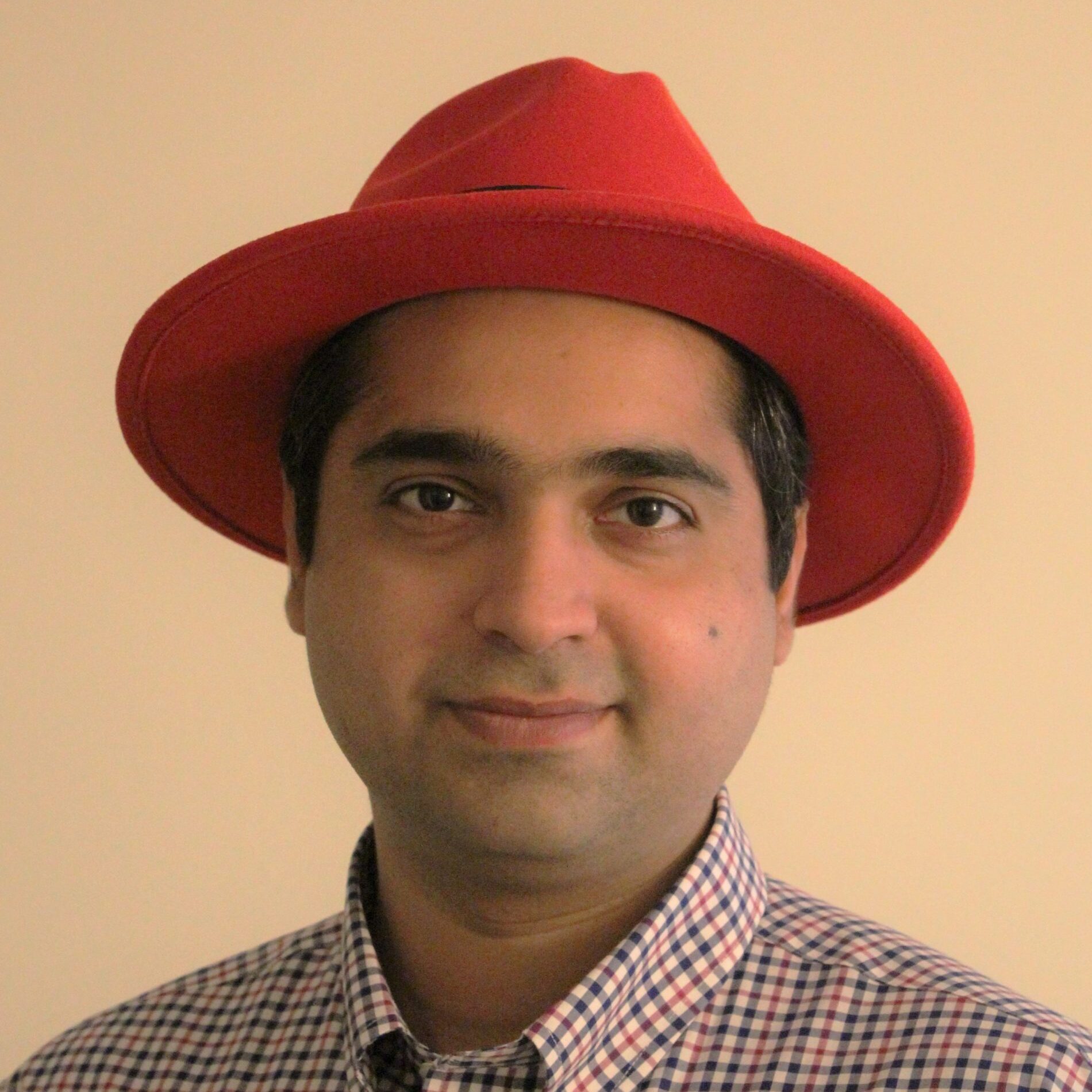
Red Hat Research Quarterly
No more gatekeepers: Why technological ignorance is radically dangerous and how an open world will help

Red Hat Research Quarterly
No more gatekeepers: Why technological ignorance is radically dangerous and how an open world will help
What is the role of the technologist when building the future? According to Boston University professor Jonathan Appavoo, “We must enable flight, not create bonds!” Professor Appavoo began his career as a Research Staff Member at IBM before returning to academia and winning the National Science Foundation’s CAREER award, the most prestigious NSF award for […]
What is the role of the technologist when building the future? According to Boston University professor Jonathan Appavoo, “We must enable flight, not create bonds!” Professor Appavoo began his career as a Research Staff Member at IBM before returning to academia and winning the National Science Foundation’s CAREER award, the most prestigious NSF award for junior faculty who successfully integrate education and research. Now on sabbatical with Red Hat Research for the academic year 2023-24, he has been engaged in multiple projects that enable flight in distinct ways, from developing a Linux-based unikernel to building an open education platform giving faculty and students access to open source technologies through a web browser.
We asked Principal Software Engineer Jason Schlessman to interview Professor Appavoo, thinking that their mutual interests in AI and machine learning, the impact of technology on people, and expanding access to technological resources would spark a provocative and fascinating conversation—and wow, were we right!
Jason Schlessman: Do you recall when you first got interested in computation?
Jonathan Appavoo: It depends how you define computation. If you define it as staring at trunks full of electronics in our family’s basement, it was as early as I could get down into the basement. In terms of getting fascinated by ideas, it was as soon as it became a possible alternative to doing my schoolwork.
Jason Schlessman: I was thinking of computation as opposed to just being into computers. Because there was a point early on where you could have a Commodore 64 and write BASIC with it. That’s the difference between playing Oregon Trail and thinking about computation.
Jonathan Appavoo: For me, the two blurred very quickly—partially because it stemmed first from staring at trunks of electronics. What was fascinating to me was not so much the world of writing code but the fact that you could make something work. There was something visceral about seeing things that were animating by thought.
That was always how it took on meaning for me: I liked to write code, but that was a side effect of realizing that the computer was very different from the other machines in my life. It was clear to me that a hammer was a hammer, but when it came to the machine, I was dealing with something human-like.
That’s what got me interested in the idea of computation, even before I understood the notion of how we define computation. It’s the same thing that drives the research now. The far end of my research today is still at that border of what it means to embody human thought in a machine.
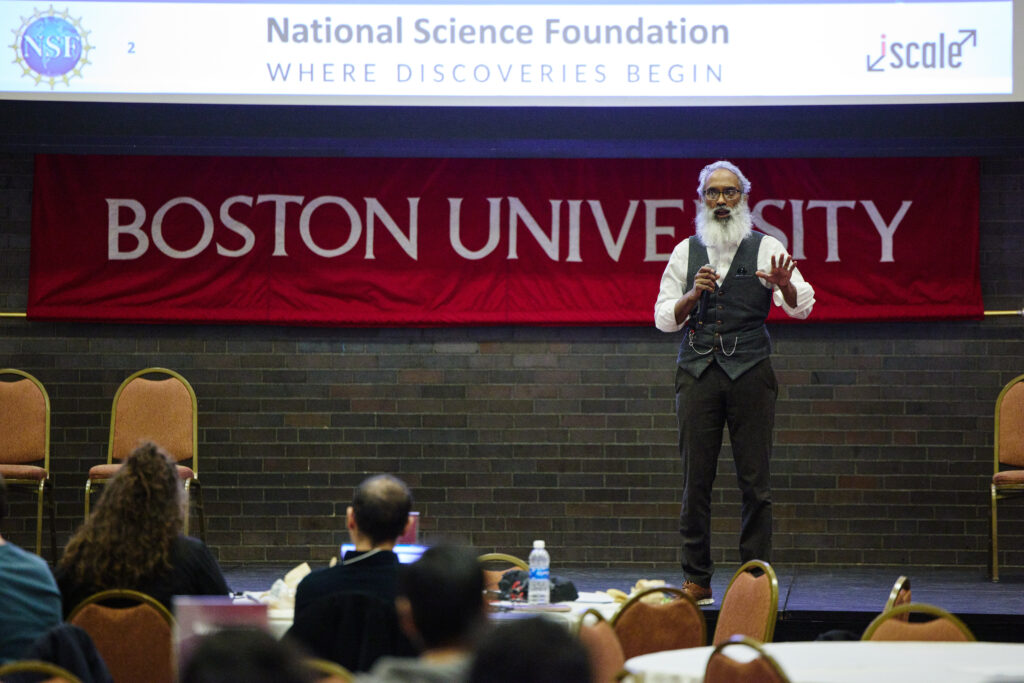
Jason Schlessman: So the electronics in the basement—they were inanimate. As you got older, you saw a humanistic side to those heretofore inanimate objects, which sparked your curiosity.
Jonathan Appavoo: Yes, and it was especially visceral as I was watching my father, an electronics engineer, wielding those devices to make games. He made one where he welded together a steel gun-like thing, put a light in it, and then had my brother paint a picture of a tiger and put a light sensor in the tiger’s mouth. If you could make the light hit the sensor in the mouth, you won the game. We did these sorts of things prior to building our first motherboards. I saw that this wasn’t just about digital electronics or analog electronics. It was about embodying ideas into things that were animated by electricity and ideas.
Jason Schlessman: Do you find the element of play has guided your interests since then?
Jonathan Appavoo: Absolutely! Most of my students look at me sideways when they first meet me and I say, “Look, all I care about is that you have fun.” If we’re not having fun, then something is fundamentally flawed. The only way to get to the heart of something in research is to really fall in love with it, and I know no better way than having fun. If your only motivation is just “I’ve got to get it done,” it’s going to be pretty hard to do meaningful science. When I started my education, I was interested in how to impart meaning to what you see on the screen. I double majored in psychology because I wanted to understand some of the neuroscience. How do these things relate? A thread in all my work is trying to understand the relationship between statistical mechanisms, inference, and deterministic computation.
Jason Schlessman: I noticed in your website bio that at one point you were working on vision but moved to operating systems. As a vision guy myself, I’m curious about that change.
Jonathan Appavoo: It’s probably more of a failing of my IQ than the field. I was really interested in conjectures by various robotics researchers that the biological and physical constraints of an organism contribute to the way its intelligence arises, and I became convinced that that was the direction I wanted to go. While at the University of Toronto, I worked on a project building a vision-based wheelchair for disabled children—in particular on a binocular head for a robotic chair. I did some studies on depth perception with it, but I quickly realized that my lack of background in signal processing and fundamental electrical engineering meant I wasn’t ready to be there.
On the other hand, building the underlying system and starting to grapple with those problems was much closer to my heart. When I was having that soul-searching moment, I realized I was at a unique place where we were still building some large-scale shared memory multiprocessors of our own, from the bottom up. We were building the boards, writing the tool chains, operating systems, and applications. I thought, if someday I’m going to get back into this idea of pursuing intelligent, biologically inspired machines, surely having a grounded focus on being able to build stuff and understand computational systems and parallelism would always make me a marketable quantity.
A thread in all my work is trying to understand the relationship between statistical mechanisms, inference, and deterministic computation.
It turns out that I’m not really suited for the real world where you produce products, but that’s okay. That was an incredibly useful bridge, because when I did switch labs and started working on shared memory multiprocessors, the lab was focused on a theme that would stick with me literally for the rest of my career: can you build systems that scale? And if you squint, that’s deeply related to the questions of what scalable computation is and what biology has to say about scalable computation.
Jason Schlessman: We haven’t touched on how open source influenced your career in your formative years, but I know it was frustrating for me, early on, that everything for vision was very closed source. At what point did open source become important to you?
Jonathan Appavoo: It took me a little while to understand the deep importance of the relationship between computing and open everything. When I did that work on depth perception, I used a machine that was proprietary, and all the code I wrote was all very proprietary. The algorithm I was trying to implement was from an open academic publication about how to use orthogonally oriented Gabor filters, but the code I was writing was for these closed GPU-like vector processors that were specific to a task.
That was already bugging me, because I hate the move toward GPUs and all these custom things. It really starts to break down some of the early promises and benefits of openness in computing. In the 70s, we got the microprocessor, making it affordable for us to get machines and to literally hack them. An old MOSS manual, or even an old Intel manual, will tell you how to build a machine in just a few pages. There are no encryption keys. There’s nothing telling me what I can and cannot do with the machine. It was a general-purpose device that we could all have our take on and then apply our creativity. That was fundamentally liberating to many kids like me. As a first-generation immigrant living in rural Ontario, I was not the prime candidate to have access to things.
It took me quite a while in graduate school to realize the danger of the world that I was participating in. I was, and still am in some sense, part of those who build large-scale computations. We’ve seen what large-scale computation can do to the world. Not only does it start to create concentrated digital power, it sucks up large fractions of human resources. Then we gate it by limiting who has access to those machines. We gate it by putting keys in the processors ensuring that only some people know how to boot the machine. You can’t actually boot some of our hardware without a co-processor with encrypted code in it. That seems antithetical to all the things I benefited from.
Is this the right way to spend our resources? It’s not for me to decide. I’m a scientist whose job should be to make sure that society has equal participation. I did my last sabbatical working with people in ethnography and looking at questions of agency. I think it’s folly for scientists to be arrogantly talking about “the impact of my technology on society.” Technology doesn’t just arise and then affect society—it’s a product of it. Scientists are a part of society. The decisions I make, the problems I choose to work on, the things I tell my graduate students—all of those things create technology in the context of my bias and my goals. To make it seem like it popped out of nowhere and now we must deal with its impact on society is not true.
When my close colleague and dear friend (BU professor) Orran Krieger and I were working on the Tornado operating system at the University of Toronto, the beauty was we had to build everything—every line of source code. Linux was only starting to show its glimmers of existence, so instead, we were comparing ourselves to proprietary UNIX-based systems and closed source hardware. The systems we were building were academic, and open.
Then as Linux started to arise and became popular, there was real transparency. You could see every line of code that went into making the system work. So while it took me a while to fully understand the importance of an open world, it became a running theme for all my work, from what I did at IBM to my projects in education now. The effort to ensure that all these things taking up so many resources are equally accessible to all of humanity is really critical.
See “Open source education: from philosophy to reality” (RHRQ 5:1) to learn more about OPE
Jason Schlessman: As you were talking just now I was thinking about little Jonathan in rural Ontario. If that microcontroller weren’t open and available, who knows what would have happened differently? Similarly, the opportunities you’re making with the Open Education Project (OPE), removing economic or other boundaries, means that what was fascinating to us can fascinate others.
Jonathan Appavoo: First, I want to reiterate one of the most important things in what you said: it’s about enabling and unleashing others’ potential. For those of us in systems, the most pleasurable thing is when we find just the right primitive that enables other people to do things that we didn’t imagine.
For those of us in systems, the most pleasurable thing is when we find just the right primitive that enables other people to do things that we didn’t imagine.
One of the most important aspects of the open education initiative was the idea that understanding how everything works is radically important. If people believe the world of computation and the digital world is just magic and inherently belongs in the hands of others, that’s radically dangerous to me. We should be investing in ensuring that people know that this digital world is grounded in reality and that they can comprehend it. It’s the confidence of knowing that you can understand—and the euphoria of comprehending what you thought was incomprehensible. And then you can use it to express your own creativity and build something that you want to build.
When I realized that the Jupyter landscape was a widely deployed web interface to a UNIX runtime, with an ecosystem that was completely open, and all you needed to access it was a web browser, the first thing I considered was that we could help people get access in a public library—that is, if I convince people it would be useful to donate computation to run the back ends on open platforms. It was my goal to ensure that the assignments and the material and the examples are all live, and that you can get access to them from a web browser, if somebody’s willing to host some back-end computation for you.
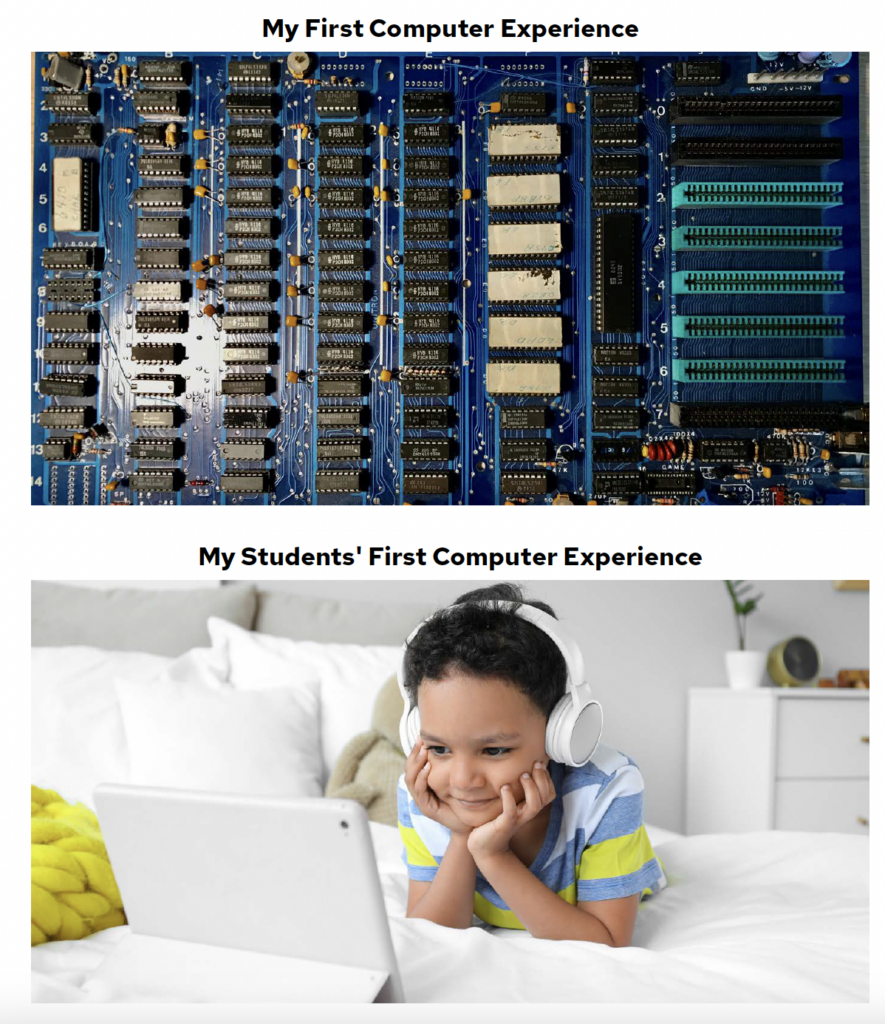
Jason Schlessman: What have you seen as far as deployment, like people using it and interacting with it?
Jonathan Appavoo: It’s extended in a direction I was only hopeful for. On a practical front, I have a whole bunch of kludged stuff that I built for my Introduction to Computer Systems class. It was motivated by one of my colleagues, Professor Mark Crovella, who had built an online Jupyter Book textbook for a linear algebra class. (Jupyter Book is a part of the Juptyer ecosystem for interactive books that uses the Jupyter environment to both author and present content.)
Poking around, I realized that opening a terminal and ensuring that there was textbook material as well as terminal-based assignment and lab material could work. That’s when I started writing Under the Covers: The Secret Life of Software, with the idea that it would marry these things together. I kludged up a bunch of things with my very broken Python to get terminal-based reproducible assignments and examples working.
But we also quickly realized that there was a deeper opportunity here to encourage and seed an open education platform: a platform tying together things like the MOC Alliance, datacenters that are publicly funded, and cloud infrastructure from open public software. We could take something like Red Hat OpenShift and say that the underlying mechanisms for everything that’s going to build up a computational environment can never be taken away. There are no bits that are proprietary. And the glue that holds all of this together, Linux, is an open source operating system.
What I didn’t quite grok at first was Git and the power of using everything that we as technical people have developed for open collaboration and tracking. We aren’t doing things motivated by fear. You want to fork our stuff—fork it! You don’t want to acknowledge me—don’t!
One of the things I struggled with a lot was how to remove the dependency on PowerPoint, Google Slides, Keynote, and certain image formats. Professor Crovella had already demonstrated the power of a Jupyter extension called RISE, which lets you create and run presentations. So we did some tooling around RISE to make it easier to build presentations.
Proprietary data formats were not in my bailiwick, but it really bothered me that images, which are so powerful in education, were all being fundamentally gatekept by the formats. I want to know that you can get access to the content and easily track and edit it. That’s when we bumped into the Draw.io ecosystem, so that at least the underlying representation of an image as an XML text document could be saved, repository-controlled, and edited through clients for which the Java source was open and available. I try to make sure that the book infrastructure we’ve tried to seed encourages people to use only formats that can be kept under repository control, rather than in a binary format that would lock us out for the future.
Jason Schlessman: Git also creates the opportunity for an educational component. If I can see how you already did something, I can follow your model. Do you see that happening?
Jonathan Appavoo: Yes, absolutely.
We should be investing in ensuring that people know that this digital world is grounded in reality and that they can comprehend it.
The way I explain it to students is that it’s the “Making Of.” You watch a movie, then you watch the director’s cut and get to see the Making Of. Being able to see stories of how things got done provides massive amounts of educational value. And it also shows us collaborating. This idea of distributed repository control is really a model for empowering and operationalizing communities. I think we as technical people can be very proud of that: we are helping contribute not just platitudes about how the world should cooperate but structures and models for how to do it.
Jason Schlessman: Absolutely. You mentioned the MOC Alliance as far as the provision of cloud resources. This work also involved the Red Hat Collaboratory, is that correct?
Jonathan Appavoo: Yes. I’ll be really honest here: when Orran first told me we were going to have this really cool collaboration with Red Hat, I was like, “Look man, I left industry, I’m not interested.” I’ve seen how this goes down: corporations come to you and you work on what they care about. I’m so glad to be proven wrong. It’s been radically powerful, and I think that it has something to do with the fundamental open source DNA of Red Hat. It really changed how people work and collaborate with us. Instead of saying, “Oh, here’s some money, go away, and maybe these are the things we’d like you to focus on,” we are engaging in a real conversation, and I’ve been thrilled.
I cannot imagine going someplace and saying, “I know that our collaboration was supposed to be about certain research things, and that’s what I’m known as for a scientist, but I think the educational mission of getting people to understand how systems work at a fundamental level and making that open matters.” But I did, and they didn’t just say, “Yeah, that’s great. Have fun.” I was given support. I was given resources. The investment of people’s time and energy to just listen and care has been phenomenal. And the OpenShift AI environment (formerly Red Hat OpenShift Data Science)—yes, it’s called open data science, but it turns out that we can actually use it as an education platform for teaching systems. Nobody balked at that either.
As a matter of fact, Red Hat is really benefiting from the risks Red Hat Research has taken. I’m thrilled to see Red Hat Research taking a platform such as OpenShift AI that’s meaningful to the corporate side, helping me operationalize it for education, and then in the end, give utility back to the corporation.
Jason Schlessman: My experience has been that OPE is just next level in terms of what’s being done to lower barriers and inspire creativity and passion. Can we bring the passion and fascination that you and I feel to the masses?
Jonathan Appavoo: Yes, and I think the obligation to do so is higher than ever. Large language models will really magnify the value of being intrigued and passionate. I’m just thinking about how that happened for something like OPE. It really took vision on the part of people like (Director of Research) Hugh Brock, (US Research Director) Heidi Dempsey, and Red Hat engineers like Danni Shi and Isaiah Stapleton. These folks have been willing to take a bet on something that you couldn’t argue has value as a product. OPE came about because corporate researchers embedded with academics who have a teaching mission were willing to invest a little time to see where things could go. That’s the kind of thing that’s not going to happen from an LLM. You can’t ask a large language model, “Should I go do this?” It’s not a sure bet.
I think we have a deep obligation to listen to people who are well outside our normative set: people in fields from philosophy to political science to ethnography to sociology.
Jason Schlessman: What about openness with LLMs? Hugely important or not?
Jonathan Appavoo: There are several fronts to that. A lot of very smart, capable people are thinking very hard about LLMs and their impact on society, so I don’t want to go into areas that aren’t my expertise. I think we have a deep obligation to listen to people who are well outside our normative set: people in fields from philosophy to political science to ethnography to sociology. It’s important that the entire human tent is engaged in these conversations because of the scale at which we can operationalize these technologies, and because of the speed at which we can release these viruses onto the world.
I can give you my opinions, but they are just my opinions. My concern is that there is a limited number of folks who have control in the conversation. Let’s engage as many people as possible. And to me, the only way to accomplish that is by defining openness very broadly. It’s open access, but also open understanding. That’s why simple goals like getting people to understand how computers work matter. I don’t need to be a rocket scientist to engage in a conversation about these technologies.
Jason Schlessman: Going back to the OPE project again: since you are continuing the OPE project during your sabbatical, where do you envisage that project going next, and what challenges do you foresee?
Jonathan Appavoo: There are some practical things that really require industrial help and commitment. One of the things we’re trying to do is codify best practices. We’re not building that much new stuff. Rather, we’re trying to find the right open source tools, the right way to package things, and the right way to give people guidance on how to build things. I want to provide exemplars that allow people to accelerate their ability to produce high-quality open educational materials. We should be able to put some investment into ensuring that if you take these things and you put them together, the container will be stable to the point where you can run a 300-person class and know it’ll work for the whole semester and people will actually get the educational value of it.
There’s also the hard work of ensuring that versions of things are compatible, they work, and they are consistent. One of the great things about the open source world is you can spit and you’re going to hit something interesting. You can do a Google search for anything you want to do and find thousands of open source projects. For OPE, we have to curate and find examples and exemplars where people have invested in ensuring that they are operationally viable. When open education goes beyond the world of computer scientists or engineers, it is fundamentally critical that we make things usable for others.
At first, the repositories had a structure in which you cloned the OPE repository to build a book. But that wasn’t quite right, because that inherently ties up histories and repositories. Instead, we constructed a tool that lets you create and seed repositories with template content and authoring tools. So OPE is more like a toolchain for building your own projects, and your own personal coursebook or materials. The projects themselves are their own repositories and can take on their own life, structured in a way so you can see examples and improve your productivity,
Jason Schlessman: Is the sabbatical an opportune time to look at those best practices that a place like Red Hat is putting into effect every day?
Jonathan Appavoo: One of the huge values Red Hat provides is taking an open source world, curating it, and ensuring that, if you take these bits in this way, they will work. The reason I use Fedora and RHEL is because somebody’s done a lot of work. My sabbatical gives me the opportunity to work with these really talented engineers who are willing to passionately spend time on OPE and think it makes sense. We’re figuring out what the right architecture looks like, how to automate things, and how to move it into the NERC. It’s a fascinating problem: how do we ensure that when we render a book it looks and interacts correctly?
Jason Schlessman: I want to close by asking about this quote on your BU home page: “Striving for stable insanity and fascination with each moment.” Would you say you’re still doing that?
Jonathan Appavoo: The people to ask are probably the people who work with me! But yes, absolutely. That’s why I came back to academia, because one of the things the academic environment still affords is the opportunity to operationalize diversity. Our future depends on our heterogeneity and the opportunity to do crazy things and have ridiculous conversations.
Our field is full of revisionist history. We want to say that the founding members of our field were straight arrows. Yes, they were brilliant logicians, brilliant mathematicians, but many of them did strange things, and we sanitized it afterward. We’ve reduced the ability to look like an idiot. And I am Idiot Number One. The ability to say stupid things in a safe environment with people you trust, in order to go where no one has gone before, that to me is sacrosanct. That’s why being willing to be a little insane is okay. And actually necessary.
SHARE THIS ARTICLE
More like this
Václav Matyáš, Professor with the Centre for Research on Cryptography and Security at the Faculty of Informatics at Masaryk University.
It is by now well understood that we humans are capable of creating systems that are more complex than we can understand.
Since the inception of artificial intelligence research, computer scientists have aimed to devise machines that think and learn like human beings. What else could AI do?
Thoughts on open source and open collaboration from the Greater Boston Research Interest Group (RIG).
Research at Devconf.us: Optimizing and automating the foundations of computing.
Parallelism promises to make programs faster, yet it also opens many new pitfalls and makes testing programs much harder.
To design effectively for our users, we need to learn more about them. If we don’t, we may make a product that our users can’t be efficient in, or worse, a product that our users have no need for in the first place.
The recent advances in AI and telecommunications are enabling a new set of complex cyber-physical systems, including those for safety-critical applications.
I have been spending a lot of time lately thinking about all the hard problems involved in managing large-scale systems. Why? Well, it turns out to be a really important topic for Red Hat Research and for the Red Hat engineering community that we hope to serve.
